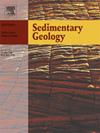Architectures of the turbidite channel in the head area of a slope-parallel directional submarine turbidite channel system: A case study of the Central Canyon Area, Qiongdongnan Basin, South China Sea
IF 2.9
2区 地球科学
Q1 GEOLOGY
引用次数: 0
Abstract
Significant volumes of sediment are deposited in deep-sea regions via turbidite channel systems, which function as critical conduits for the transport of sediment from shelf environments to the abyssal plain; concurrently, complex sedimentary processes—such as erosion, incision, and sedimentation—play an integral role in the development of diverse architectural features. In particular, the head area of slope-parallel submarine turbidite channel systems is marked by significant sediment transport, yet the rapidly changing topography has limited our understanding of their architectural stacking patterns. In this study, we selected the head area of the Central Canyon Area (CCA) in the Qiongdongnan Basin (QDNB) as a case study and constructed various patterns of turbidite channel system architecture along the turbidity flow direction. Based on >200 m of core samples, we identified nine lithofacies and determined the transition patterns of turbidite flows from coarse-grained equilibrium flow, fine-grained equilibrium flow, depositional flow, and erosion flow. Furthermore, utilizing high-resolution 3D seismic data, we measured the geomorphological parameters of the channel systems, including the static aspect ratio, cross-sectional asymmetry, angles of channel-complex growth trajectories, and stratigraphic mobility numbers. By applying an empirical formula that correlates turbidite channel system morphology with layer-averaged flow velocity, we calculated the corresponding Froude numbers. Finally, we reconstructed the evolution of the turbidite channel system architecture in different hierarchies.① In the initial depositional stage, coarse-grained and fine-grained equilibrium flows developed. The turbidite channel system complex presented high aspect ratios and asymmetry values in upstream depocentre areas, transitioning to lower aspect ratios in midstream regions while maintaining high asymmetry. This architecture is characterized by steady vertical accretion types, with the predominant filling types being layer-filled, cut-stack, and interbedded mass transport deposits (MTDs). ② During the rapid accumulation stage, a shift to lower aspect ratios and asymmetry values occurs, revealing diverse turbidite channel systems, primarily lateral accretion types with layered filling, lateral products, and cut-stack patterns dominating the channel stacks. ③ In the reworking MTD stage, a sharp change in the aspect ratio signals a dominance of lateral accretion-type channel systems interbedded with MTDs.
Furthermore, we identify key factors influencing the architecture of turbidite channel system stack patterns across different stages and speculate on deposition patterns in slope-parallel submarine channel heads. Statistical analysis of the morphological parameters revealed that during the initial deposition and rapid accumulation stages, the topographic slope angle and turbidity currents were the primary influences on channel accumulation. In contrast, during the reworking MTD stage, turbidity currents and sediment deposition rates appear to be key factors affecting channel architecture. This comprehensive evaluation advances our understanding of turbidite channel system evolution and its architectural responses to dynamic sedimentary processes.
斜坡-平行定向海底浊积水道体系头区浊积水道构型——以南海琼东南盆地中央峡谷区为例
大量沉积物通过浊积水道系统沉积在深海地区,浊积水道系统是沉积物从陆架环境向深海平原运输的关键通道;同时,复杂的沉积过程,如侵蚀、切割和沉积,在各种建筑特征的发展中起着不可或缺的作用。特别是,斜坡-平行海底浊积水道系统的头部区域具有显著的沉积物输运,但快速变化的地形限制了我们对其建筑堆积模式的理解。本研究以琼东南盆地中央峡谷区(CCA)头区为例,沿浊积流方向构建了多种浊积岩河道体系构型。根据岩心样品>;200 m,鉴定出9种岩相,确定了浊积岩流由粗粒平衡流、细粒平衡流、沉积流和侵蚀流的过渡模式。此外,利用高分辨率三维地震数据,我们测量了河道系统的地貌参数,包括静态纵横比、横截面不对称、河道复杂生长轨迹的角度和地层活动性数。通过将浊积河道系统形态与层平均流速相关联的经验公式,我们计算了相应的弗劳德数。最后,重建了不同层次浊积岩河道体系的演化过程。①沉积初期发育粗粒平衡流和细粒平衡流。浊积岩河道体系复合体在沉积中心上游呈现高纵横比和高不对称值,在中游区域向低纵横比过渡,但仍保持高不对称。该构造以稳定的垂直吸积类型为特征,主要的充填类型为层状充填、切割堆积和互层体输运矿床(MTDs)。②在快速成藏阶段,低纵横比和不对称值发生转变,显示出多种浊积水道体系,以横向增生类型为主,以层状充填、侧向生成物和切割叠合模式为主。③在MTD改造阶段,纵横比的急剧变化标志着与MTD互层的侧向吸积型水道系统占主导地位。此外,我们还确定了影响不同阶段浊积水道体系叠加模式的关键因素,并推测了斜坡平行海底水道头部的沉积模式。形态参数的统计分析表明,在初始沉积和快速堆积阶段,地形坡度角和浊度流是影响河道堆积的主要因素。相比之下,在改造MTD阶段,浊度流和泥沙沉积速率似乎是影响河道结构的关键因素。这一综合评价促进了我们对浊积岩河道体系演化及其对动态沉积过程的建筑响应的理解。
本文章由计算机程序翻译,如有差异,请以英文原文为准。
求助全文
约1分钟内获得全文
求助全文
来源期刊

Sedimentary Geology
地学-地质学
CiteScore
5.10
自引率
7.10%
发文量
133
审稿时长
32 days
期刊介绍:
Sedimentary Geology is a journal that rapidly publishes high quality, original research and review papers that cover all aspects of sediments and sedimentary rocks at all spatial and temporal scales. Submitted papers must make a significant contribution to the field of study and must place the research in a broad context, so that it is of interest to the diverse, international readership of the journal. Papers that are largely descriptive in nature, of limited scope or local geographical significance, or based on limited data will not be considered for publication.
 求助内容:
求助内容: 应助结果提醒方式:
应助结果提醒方式:


